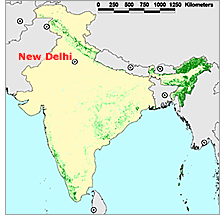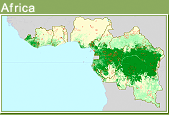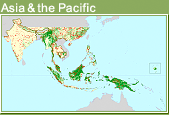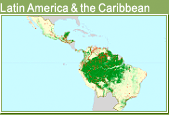Country details
Status of Tropical Forest Management 2005
Asia & the Pacific
India

©UNEP-WCMC 2004
In India, state forest departments are custodians of the public forest resource and act as the forest authorities. Timber production is shifting away from natural forests, stimulating the development of community-based approaches. All forest states have set up forest development corporations, which are responsible for production within the public forest estate. Increasingly, some responsibilities for and benefits from the forests are being shared with local communities. For example, joint forest management, which usually involves an agreement between the forest department and a village to jointly protect and manage forest land, has become widespread. Moreover, farmers are becoming more involved in tree-growing, the private sector is participating more in forest management, and partnerships between forest-product manufacturing companies and local farmers are developing. However, several components of SFM are still missing, including an accurate inventory of resources, the classification of land by capability and function, efficient utilization and sustained investment.
Key points
- The estimated 39.1 million hectares of India's natural-forest PFE comprises 13.5 million hectares of production forest and 25.6 million hectares of protection forest. Not all of this PFE is tropical.
- There are also 32.6 million hectares of planted forest in the PFE.
- While there was a net positive change in the area of forest during the 1990s, natural forest continues to be lost or degraded.
- In production forests, India follows a system of preparation and periodic revision of working plans.
- Information on the extent and management of forests is fragmentary at best, and often unreliable.
- Nevertheless, it is estimated that at least 4.80 million hectares of natural-forest production PFE (tropical and non-tropical) are being managed sustainably; insufficient information was available to estimate the area of protection PFE so managed.
- The condition of several of the protected areas is poor because of fire, grazing and inadequate management.
- Forest management is becoming increasingly decentralized and community-based approaches are becoming more common.
- A national afforestation program was initiated in 2000 and operates at the level of forest divisions within states through forest development agencies and village forest committees.
- India's wood-based industries face a serious scarcity of raw materials and, increasingly, they depend on non-forest and external sources. The country has become a major importer of tropical timber, particularly logs.

 Africa
Africa  Asia & the Pacific
Asia & the Pacific  Latin America & the Caribbean
Latin America & the Caribbean